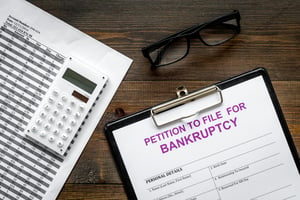Safe Driving Tips for Winter Holiday Trips
With winter comes delayed dawns, early dusks, and the threat of a polar vortex. Stalactites of ice, wintry mixes, and brutal wind chills tempt us to stay home. But most of us traverse the frozen tundra to visit family and friends for the holidays, even if conditions are particularly challenging.
According to AAA, about 49 million people will travel by road this holiday season. Almost 40% of weather-related vehicle crashes annually occur due to winter weather. While these numbers can be frightening, don’t freeze up. Follow the driving safety tips below for a chill trip.
- Inspect your tires. Tire inflation pressure drops when temperatures turn cold. Check tire pressure frequently. Fill each tire to the manufacturer’s recommended pressure as stated in your manual, not to the pressure indicated on the tire. Also, check that the treads on each tire are at least 2/32 of an inch. And don’t forget to make sure you have a spare!
- Check the battery. Gas or diesel engines use more battery power to start in cold weather. The range of electric and hybrid-electric vehicles may also be reduced. Check your battery, charging system, and belts before hitting the road. To decrease the drain on the battery caused by self-heating in electric or hybrid-electric vehicles, plug it in at night. Doing so will keep the battery temperature in its optimal range. All vehicle owners should always keep jumper cables in the trunk.
- Know your vehicle’s safety features. Most vehicles have safety features that can help performance in wintry conditions. You may have learned to pump the brakes to improve grip and reduce wheel slippage when it’s slick. But if your vehicle has an antilock brake system, apply firm, continuous pressure to the brake pedal to achieve the same effect.
- Inspect your lights. Visibility decreases during winter storms. Ensure your brake lights, turn signals, emergency flashers (hazard lights), and interior bulbs are in good working order.
- Check your coolant. Make sure you have enough coolant (antifreeze). Have a mechanic check for leaks, worn hoses, and other parts, repairs, or replacements that may be needed.
- Mind your wipers. Fill the wiper fluid reservoir all the way with de-icing fluid. Test the functionality of your defrosters and wipers. Replace any worn blades, giving special consideration to heavy-duty wipers if you live in a particularly snowy climate.
- Keep your gas tank full. Icy roads can lead to bumper-to-bumper traffic and spinouts. If you have a gas or diesel vehicle, make sure that your gas tank is full so you don’t get stranded.
- Stock for an emergency. You may have heard of winter driving kits. A variety are available for purchase. As an alternative, create your own kit by packing a snow shovel and broom, an ice scraper, sand or kitty litter, a flashlight, flares and emergency markers, blankets, water, food, and any necessary medicine.
- Know conditions. Before your leave, check the local weather and traffic. If roads are in bad shape, postpone nonessential travel until conditions have cleared. If you proceed to travel, however, make sure you’re prepared. Consider leaving early.
- Plan your route. Even if you usually rely on GPS, familiarize yourself with directions to your destination. Inform others of your route and estimated arrival time. Allow enough time to stop, stretch, eat, and switch drivers – especially on long trips.
- Follow the law. Since you’ve notified others of your route, there’s no need to text while driving. Drive only when sober. Alcohol and drugs impair coordination, judgment, perception, and reaction time. Be cool and obey posted speed limits. And, as always, wear your seat belt.
The unexpected can happen on any road trip, whether just a few blocks or thousands of miles away. No one wants to call in late to a family dinner from a ditch. Lucky for you, these tips have equipped you to skate through your trip to Grandma’s without delays, dangers, or humbugs.
Related Resources
You Don’t Have To Solve This on Your Own – Get a Lawyer’s Help
Meeting with a lawyer can help you understand your options and how to best protect your rights. Visit our attorney directory to find a lawyer near you who can help.






